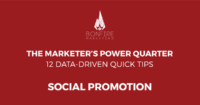The SEO landscape is constantly evolving, but the end goal of Google and other search engines has always been the same: Get the search results right by providing the most highly relevant and useful information to maximize user experience (UX). In fact, Google is so focused on user satisfaction, it even rolls out surveys asking users to rate how satisfied they were with a search.
SEO takes a slightly different approach to UX than what’s customary to website and app design. It doesn’t focus on what the user sees, but rather on what the user wants.
Google maximizes UX and satisfaction by trying to understand and address the intent of the user. Whether it’s making a purchase, learning about a topic, getting directions to a destination, or myriad other user behaviors, user intent is defined as “the goal of the user typing the search query.”
But how does Google measure user intent, and what variables can be optimized to help Google achieve optimal UX while earning prominent search rankings in the process? The following user behavior signals help with measurement:
Click-through rate
If you can get your site to rank at the top of the search engine results for a keyword or phrase, fantastic, but that won’t last long if the click-through rate at that rank position is poor. Searchmetrics cited click-through rate at the top of its Search Ranking Factors and Rank Correlations list for the past two years.
If your content is ranking at the second position for a search query, but nobody’s clicking through to it from the search engine results page, it indicates to Google the result isn’t relevant to the query. Eventually, you will see that ranking decrease. Because of this, meta descriptions and title tags are now among the most powerful on-page SEO elements; these provide the only preview to your site’s content on the search results page. Meta descriptions should include an enticing call to action and as many valuable keywords that can fit within the 155-character limit (115 characters for mobile).
Bounce rate
Maintaining a low bounce rate has become an increasingly vital element to SEO success. When users only click on your site for a second before bouncing back to the search results, it suggests to Google your site didn’t offer the information the searcher needed and doesn’t merit a prominent ranking.
These bounced sessions are referred to as short clicks, which signal user dissatisfaction. Even if your content is fabulously helpful, if the layout of your site is terrible (i.e., too many ads above the fold, brutally slow load times, Flash animations, etc.), that will prevent people from sticking around.
This is especially true for mobile. Mobile users are fickle, and if your site doesn’t load within one to two seconds, it’s on to the next one. More Google searches are now completed on mobile than on desktop computers, making a well-designed, easy-to-use mobile experience essential in today’s SEO landscape.
This topic has been covered extensively over the past year, culminating with the mobile search update and its fallout in April 2015, commonly referred to as “Mobilegeddon.” If your website still lacks a mobile experience, a mobile update should be an immediate priority.
Time on site
Time on site is another strong signal of user intent. In contrast to short clicks, long clicks find users spending a substantial amount of time on site without clicking back to the search results.
These long clicks are valuable signifiers of user satisfaction for Google, because if a user only has to conduct one search and click one link to find the right information, then Google has done its job by providing the best results possible.
The more engaged you can keep your users and the more time they spend on site, the more valuable the user signal. This is where a well-structured site with rich and intuitive navigation comes in handy.
Make it easy for the user to find exactly what they need and to explore deeper pages within your website. Navigational elements like breadcrumbs and sitemaps (HTML for users and XML for search engine crawlers) contribute to a positive UX. Plus, they make it even simpler for Google to crawl, index, and understand the architecture of your site.
Optimizing your site to cater to user signals and UX doesn’t require a seismic shift in strategy. If you’re presently developing content for human consumption and enrichment — not simply to game Google’s algorithms — you’re already doing it right. Just remember to write compelling titles and meta descriptions that convince users to click through to your site from the search results, and provide high-value, engaging content on a clean, fast-loading page to keep them there.
Stay tuned to the Bonfire blog for the second installment of this series, in which I’ll cover the intersection of keyword-based strategy with UX.
Related resources:
More Content
The Marketer’s Power Quarter: Boost Social Promotion
This is the ninth in a 12-part series of quick-fix tips to improve your digital marketing results. Catch up on our last tip, and subscribe to our newsletter to get
The Marketer’s Power Quarter: A Local SEO Strategy
This is the sixth in a 12-part series of quick-fix tips to improve your digital marketing results. Catch up on our last tip, and subscribe to our newsletter to get
The Marketer’s Power Quarter: Better Ad Retargeting
This is the fifth in a 12-part series of quick-fix tips to improve your digital marketing results. Catch up on our last tip, and subscribe to our newsletter to get the







Leave A Comment